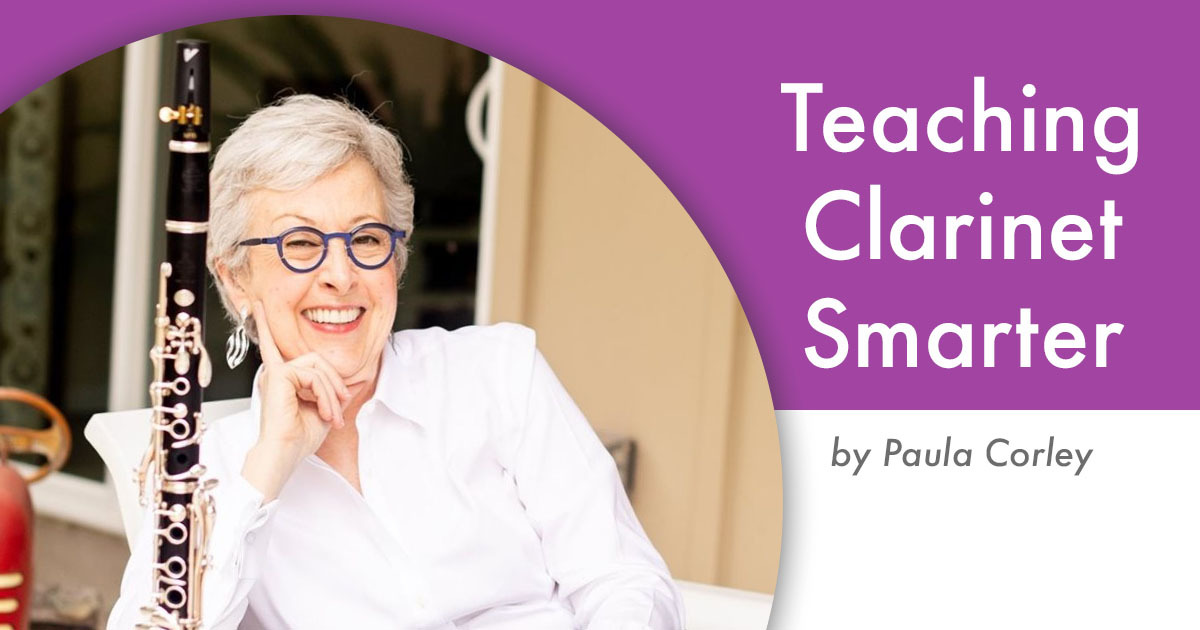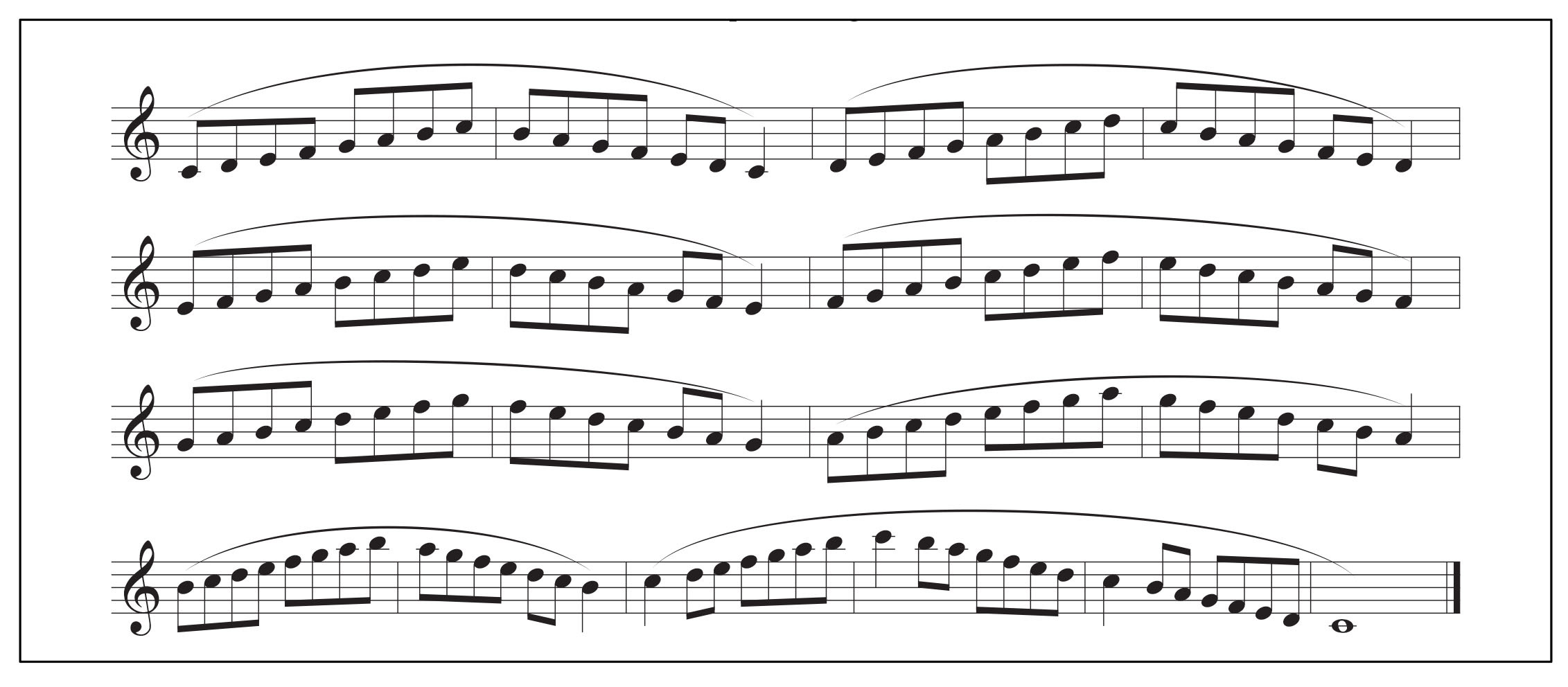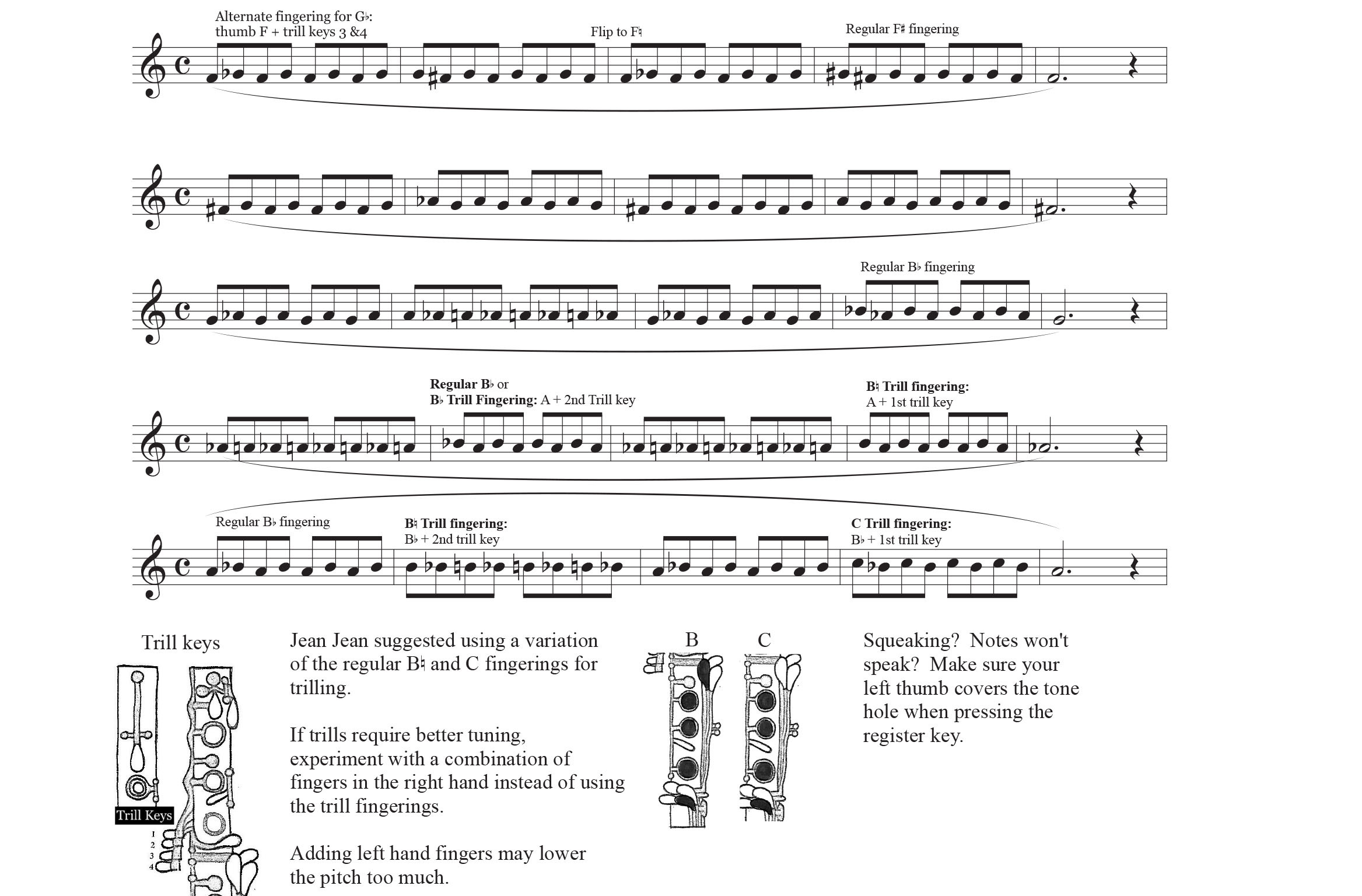Teaching Clarinet Smarter: Assignments That Promote Student Progress and Make Teacher Assessment Easier
by Paula Corley
Date Posted: November 09, 2020

What is the best way to keep clarinet students engaged and moving forward regardless of the teaching situation? Provide a curriculum that facilitates measurable progress. Without face-to-face instruction and interaction with other musicians, students may be wondering “why am I practicing at all?” For teachers, music assessment can be challenging because music assignments sometimes have “more than one answer.” Here are some task-specific materials that provide an easy way to measure progress.
Finger Technique
Literally thousands of options exist for developing smooth and even finger technique. When choosing for your students remember that progress is the goal and the “less is more” rule applies. Choose materials that are slurred - completely free of articulations - that can be practiced in any major key signature. Having difficulty choosing just one? Pick several and rotate the exercises.
Here are my suggestions:
1. Extended Pattern from Daily Workouts
Inexperienced students often falter or stop completely when faced with rapid stepwise passages. The Extended Scale Pattern is the first step toward recognizing scale patterns within the music, regardless of the stated key signature. Non tonic-to-tonic patterns require players to concentrate carefully and will help develop listening skills. Play at a ‘comfortable’ tempo. Take breaths at the ends of phrases when needed.

2. Interrupted Pattern from Carl Baermann Complete Method for Clarinet
Carl Baermann left a wealth of study material for clarinetists and his teachings are still the standard. He wrote “the purpose of technical study is to enable the player to master…the facility of execution in every detail.” The interrupted pattern below can be practiced any number of ways. For the developing player, all slurred, at a moderate tempo that facilitates an even, clean scale will work best.

3. Finger Warm-up adapted from Vade Mecum
Paul Jean Jean’s Vade Mecum has long been a staple in clarinet technique development. The first group of exercises from the book is designed to warm-up the fingers. These half-step and whole-step “trills” require excellent hand position and minimal motion. If practiced diligently, fingers become more even and smooth. Isolating simple chromatic intervals also reinforces enharmonic recognition skills and alternate fingerings. The example below is one of four. Find the others at www.clarinetcity.com.

4. Changing Subdivisions from Daily Workouts

Good rhythm or “sense of time” is arguably the most important aspect of any musical evaluation. With all other aspects being equal, the player with the best rhythm usually “wins.” Players must be able to perform accurate rhythmic subdivisions of 2, 3, 4, 6, and 8. They also must have the ability to shift between subdivisions without changing the tempo, often within a single measure or beat. Sound complicated? It doesn’t have to be, if the task is presented in the right way.
- Transpose this into different keys and clefs. Works well for a variety of instruments.
- Vary tempos from Adagio to Allegro.
Rhythm & Articulation

- Practice the Legato Subdivision Exercise with “one beat” for each grouping.
- 32nd note grouping determines the tempo.
- Play the entire exercise in one breath.
- Start with a comfortable note in the chalumeau register. Next, add the register key and repeat.
- Try playing with eyes closed and visualize where the tongue is touching the reed. Higher, near the tip of the reed is the best place for articulation.
The clarinet sound should not change when players articulate. Poor articulated tone on clarinet is likely the result of excessive tongue motion and not the consonant used to start the sound. Excessive tongue motion occurs when practice tempos are too slow. Allow students to start at their ‘natural’ tempo. Faster tempos minimize tongue motion.
Pronunciation of consonants and vowels provide a concept for articulating on clarinet. However, when we speak, we don’t have a clarinet mouthpiece and reed inside our mouth. The vowel sound long “e” works well for maintaining good tone while articulating. The most focused clarinet sound occurs when the tongue is high and forward inside the mouth. In some languages there is no long “e” sound, so it may be necessary to look for alternatives to produce the same sound. For example, in Mandarin the number “one”, (yi), sounds like a long “e”.
Consonants may also be pronounced differently according to native language. For example, when making the “t” sound in English, the tongue touches the gum ridge behind the upper front teeth.
The Spanish “t” is produced quite differently, with the tongue actually touching the back of the front teeth, without the puff of air that characterizes the English “t”.
“T” has four different pronunciations in the English Language.
Most commonly, “T” as in the word “tea” is used in clarinet articulation for a crisp start to the sound. “D” is produced with slightly less air stress than “T” and also works well for clarinet articulation.
6. Tonguing Bursts from Daily Workouts

- Speed is directly related to the distance of the tongue from the reed. Keep the tongue as close to the reed as possible to minimize motion and increase speed.
- If embouchure movement is present, start at the fastest tempo possible and work backwards to slower tempos.
- Practice in all major keys.
Need more? Please visit www.clarinetcity.com for more free instructional materials and videos.
Download the PDF here.

About the Author
Paula Corley is the Education Advisor for Buffet Crampon North America. She has 33+ years of teaching experience from middle school to university level. Most recently Paula served as the clarinet instructor at Texas Lutheran University where she hosted ‘clariNETWORKS’ – a very popular annual event for clarinetists of all ages and band directors. She is also a chamber music judge for Music for All's National Chamber Music Festival and served as the Pedagogy Chair for the International Clarinet Association from 2018-2020. Most know her as the ‘mayor’ of Clarinet City, a teaching website for all ages and stages of clarinet playing.
Originally from Mississippi, Paula grew up without access to clarinet lessons which sparked a lifelong interest in research for developing players. She is a graduate of Mississippi State University (BME) where she was named Alumnus of the Year in 2012-13 and Southern Methodist University (MM) where she worked with the legendary Howard Dunn. Paula taught in Plano, Texas ISD for many years before moving to Asheville, NC where she served as principal clarinet in the Asheville Lyric Opera and on the faculty at Mars Hill University (NC).
Author of So You Want to Play the Clarinet and The Break (Southern/Hal Leonard), Paula has performed and presented at music conferences throughout the US since 1998. She is a performing artist and clinician for Vandoren and for Buffet Crampon and her articles have appeared in THE CLARINET, Vandoren WAVE, The Texas Bandmasters Review, and The Instrumentalist. A new series of her arrangements for clarinet can be found at Hal Leonard. She also has two recorded works for clarinet: Unfamiliar Territory by Michael Markowski and Road Trip for clarinet quintet by Clifton Jones. Visit clarientcity.com.